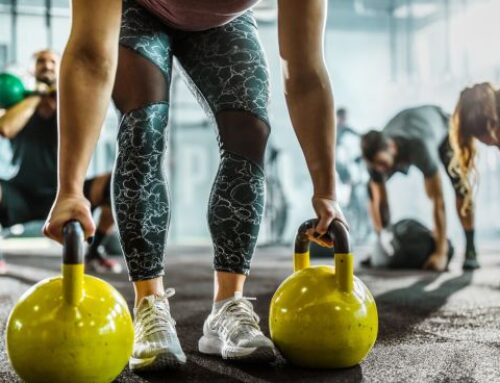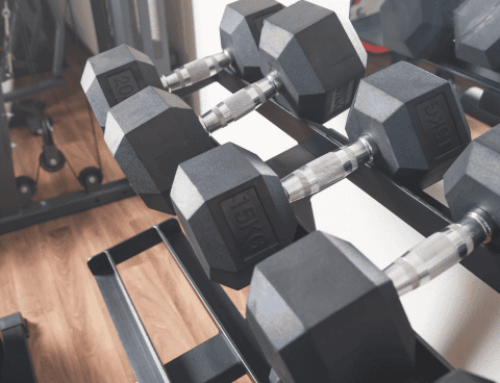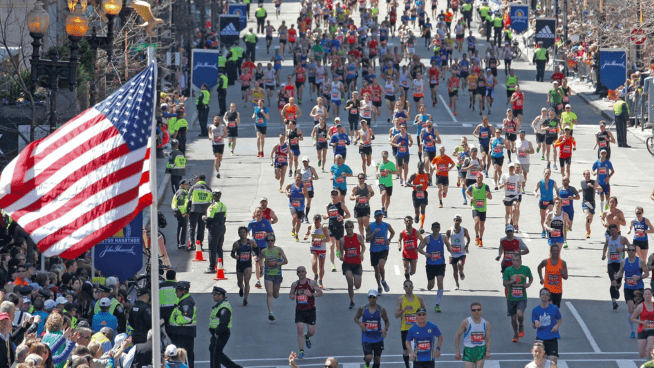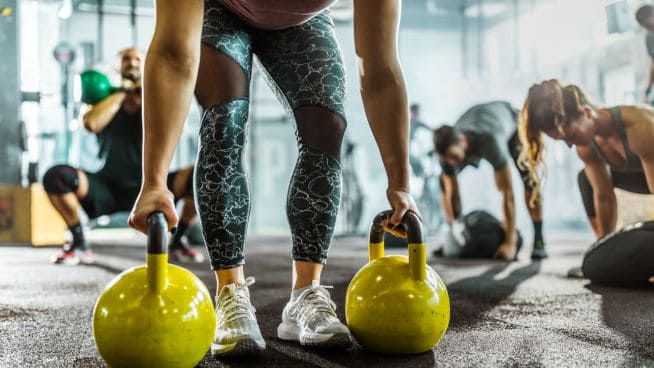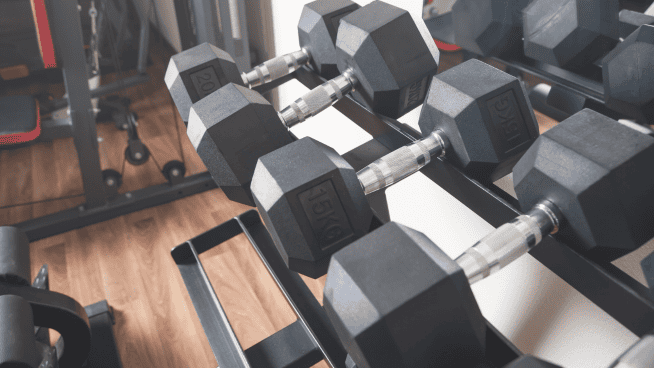Did You Know That Women Use Energy Differently Than Men During Exercise?
Men and women are not just distinguished by physical strength, endurance, or exercise preferences; they fundamentally differ in how their bodies utilize energy during physical activity.
These differences are deeply rooted in biology, shaped by distinct hormonal profiles, and significantly impact how each gender approaches exercise, nutrition, and recovery.
The percentage of testosterone to estrogen in men and women varies significantly due to their distinct hormonal profiles. Here’s an approximate look at the hormonal balance between testosterone and estrogen in each gender:
Men: Testosterone and Estrogen Levels
- Testosterone: Normal levels range from 300-1,000 ng/dL.
- Estrogen (Estradiol): Normal levels range from 10-50 pg/mL.
Women: Testosterone and Estrogen Levels
- Testosterone: Normal levels range from 15-70 ng/dL.
- Estrogen (Estradiol): Levels fluctuate during the menstrual cycle, typically ranging from 15-350 pg/mL.
Approximate Percentage Ratios of Testosterone to Estrogen
Men:
- Testosterone levels are significantly higher compared to estrogen.
- Testosterone to Estrogen Ratio: On average, testosterone is about 20,000 to 100,000 times higher than estrogen in men, depending on individual hormone levels.
Women:
- Estrogen levels are substantially higher compared to testosterone.
- Estrogen to Testosterone Ratio: Estrogen levels can be 5 to 20 times higher than testosterone, depending on the menstrual cycle phase.
Key Points:
- Men have a predominantly testosterone-driven hormonal profile, with estrogen making up a tiny fraction (less than 1%) of their overall sex hormones.
- Women have an estrogen-dominant profile, with testosterone levels being a smaller fraction compared to estrogen (around 5-20% of estrogen levels, depending on the cycle phase).
These hormonal ratios greatly influence the physiological and metabolic differences observed between men and women, particularly regarding muscle growth, fat distribution, and overall energy utilization during exercise.
Understanding these variances allows for more effective and personalized training and nutrition strategies that maximize performance and overall health.
1. Metabolism: Caloric Burn and Energy Efficiency
Men: Men generally have a higher percentage of lean muscle mass compared to women, resulting in a higher basal metabolic rate (BMR)—the rate at which the body burns calories at rest. This means that men burn more calories during exercise and at rest, giving them an inherent advantage in weight management.
During exercise, men primarily rely on carbohydrates (glycogen) as their primary energy source, particularly in high-intensity activities like sprinting or heavy lifting. This carbohydrate reliance supports quick, explosive movements, but it also means that men may deplete their glycogen stores faster during prolonged activities.
This makes men more efficient at high-intensity, short-duration exercises that demand quick bursts of energy, such as weightlifting, sprinting, and other power-based activities. Testosterone also aids in muscle repair and growth, allowing men to recover faster and engage in more frequent high-intensity workouts
Women: Women’s bodies are biologically programmed to store fat more efficiently, an evolutionary adaptation designed to maintain energy reserves for pregnancy and breastfeeding. As a result, women tend to burn more fat during lower-intensity exercise than men, who primarily rely on carbohydrates at the same intensity.
During aerobic exercise, women conserve glycogen and shift towards burning fat, which supports longer performance and delays the onset of fatigue commonly experienced when glycogen stores are depleted.
This makes women naturally more efficient at utilizing fat as a fuel source, especially in endurance activities, contributing to a slower, more sustained release of energy that supports prolonged exercise.
2. Fat Utilization: The Female Advantage in Endurance
Women: Research has shown that women’s bodies are more efficient and effective at using fat as a fuel source during exercise, particularly during moderate to prolonged activities. This fat utilization advantage becomes especially apparent in endurance sports like long-distance running, cycling, or swimming, where the body’s ability to sustain energy release is crucial.
Men: Men, on the other hand, tend to store fat differently, primarily around the abdomen and visceral areas. Their training often focuses on burning calories rapidly and building muscle through high-intensity interval training (HIIT) and resistance exercises, which are highly effective for reducing body fat and enhancing cardiovascular fitness. However, men may hit the “wall” during prolonged endurance activities when glycogen stores are exhausted, highlighting a comparative disadvantage in fat utilization.
3. Recovery and Energy Replenishment: Gender-Specific Needs
Men: Post-exercise recovery in men is primarily influenced by testosterone, which facilitates rapid replenishment of glycogen stores and supports muscle repair. This allows men to train at high intensities more frequently, though they may experience increased muscle damage and soreness due to lower estrogen levels.
Effective recovery strategies for men often include a diet rich in carbohydrates and protein to quickly restore energy and support muscle growth.
Women: Estrogen’s anti-inflammatory effects provide women with a unique recovery advantage, helping to protect muscle tissue from damage and promoting quicker healing. As a result, women can often handle higher training volumes, such as extended endurance workouts, with less overall muscle damage.
Women’s recovery nutrition may benefit from a balanced intake of healthy fats alongside carbohydrates to optimize energy replenishment, particularly given their body’s propensity to utilize fat during exercise. Additionally, recovery needs can vary based on menstrual cycle phases, as hormonal fluctuations influence energy requirements and muscle repair processes.
4. Bone Density and Joint Health: Hormonal Protection and Risks
Men: Testosterone contributes to higher bone density, making them generally more resilient to bone-related injuries during high-impact sports and strength training. This enhanced skeletal structure allows men to safely engage in activities that involve heavy lifting, explosive movements, and high-impact forces, supporting overall athletic performance.
Women: Estrogen, like testosterone, plays an essential role in maintaining bone health in women, but its decline, especially during menopause, significantly increases the risk of osteoporosis. To combat this, women’s training programs often emphasize weight-bearing exercises, resistance training, and balance exercises, which are essential for preserving bone density and protecting joint health throughout aging.
5. Hormonal Fluctuations and Cycle-Specific Training (Women)
Men: Men’s hormone levels remain relatively stable throughout the month, allowing consistent training intensity and recovery patterns without significant hormonal interference.
Women: Women experience hormonal fluctuations across the menstrual cycle, affecting energy levels, strength, and endurance. For example, higher estrogen levels can enhance performance during the follicular phase, making it an ideal time for more intense workouts.
Conversely, the luteal phase may increase fatigue, suggesting a need for lighter workouts or additional recovery. Understanding and adapting to these cycle phases can help women optimize their training for better results and reduced injury risk.
Practical Applications: Tailoring Training and Nutrition
Women:To maximize performance, women can benefit from incorporating a balanced mix of endurance and strength training that supports fat oxidation and muscle maintenance. Nutrition strategies should emphasize healthy fats and carbohydrates to fuel prolonged activity and aid recovery, particularly during specific menstrual cycle phases.
Men: Men’s training can prioritize high-intensity, glycogen-depleting exercises such as HIIT and strength training to leverage their carbohydrate metabolism and muscle-building advantages. Nutritional support should focus on rapid glycogen replenishment and protein intake to enhance muscle repair and growth.
While the fundamental principles of exercise apply to everyone, the differences in how men and women utilize energy during physical activity are crucial to optimizing performance, health, and overall fitness.
These biological differences are not limitations; instead, they are guides that allow each gender to harness their unique physiological strengths, exercise smarter, eat better, and recover more efficiently, fostering healthier, more effective training outcomes.
Estrogen Benefits
Estrogen plays a significant role in training and exercise performance, particularly for women, although it also has benefits for men. Here are the key benefits of estrogen in training:
1. Enhanced Fat Metabolism
- Promotes Fat Oxidation: Estrogen increases the body’s ability to oxidize fats during exercise, especially during endurance activities. This helps preserve glycogen stores and allows for sustained energy release, making it particularly advantageous in long-duration exercises like running, cycling, and swimming.
- Better Weight Management: By promoting fat utilization, estrogen helps women maintain a leaner body composition during training, supporting weight management goals and overall metabolic health.
2. Improved Muscle Recovery and Reduced Inflammation
- Anti-Inflammatory Effects: Estrogen has anti-inflammatory properties, which help reduce muscle damage and soreness after exercise. This promotes quicker recovery and the ability to handle more frequent training sessions with less downtime.
- Enhanced Muscle Repair: Estrogen facilitates muscle repair by reducing the inflammatory response and promoting cellular regeneration, leading to faster recovery after workouts.
3. Protection Against Muscle Damage
- Reduced Oxidative Stress: Estrogen helps protect muscle cells from oxidative stress that occurs during intense exercise. This protection minimizes the damage to muscle fibers, preserving muscle integrity and function.
- Muscle Preservation: Estrogen helps preserve muscle mass by reducing protein breakdown, which is beneficial during periods of heavy training or caloric restriction.
4. Enhanced Blood Flow and Cardiovascular Health
- Improved Circulation: Estrogen promotes vasodilation, which improves blood flow to working muscles during exercise. By increasing circulation, it delivers more oxygen and nutrients to muscles, enhancing performance and endurance.
- Cardiovascular Protection: Estrogen supports heart health by maintaining healthy blood vessel function, reducing LDL cholesterol, and increasing HDL cholesterol, which contributes to better overall cardiovascular performance during training.
5. Increased Flexibility and Joint Health
- Joint Lubrication and Elasticity: Estrogen helps joint health by supporting collagen production and maintaining the elasticity of connective tissues. This can lead to improved flexibility, reduced risk of joint injuries, and enhanced overall mobility during training.
- Protection Against Joint Degeneration: By preserving cartilage and joint structures, estrogen helps reduce the risk of conditions like osteoarthritis, which can be a concern for athletes and active individuals.
6. Enhanced Mood and Motivation
- Mood Regulation: Estrogen plays a role in regulating neurotransmitters such as serotonin, which can positively impact mood, motivation, and overall well-being. This can enhance mental resilience and motivation during training, leading to better adherence and performance.
- Reduced Perceived Effort: Estrogen’s effect on mood can also reduce the perceived effort during exercise, making workouts feel less strenuous and improving overall exercise enjoyment.
7. Bone Health and Strength
- Bone Density Maintenance: Estrogen is crucial for maintaining bone density, particularly for women as they age or undergo high-impact training. Strong bones reduce the risk of breaks and fractures, supporting overall athletic performance.
- Enhanced Bone Remodeling: Estrogen helps balance bone remodeling by promoting osteoblasts (cells that build bone) while inhibiting osteoclasts (cells that break down bone), contributing to stronger bones.
8. Improved Endurance and Aerobic Capacity
- Enhanced Oxygen Utilization: Estrogen positively affects mitochondrial function, allowing muscles to utilize oxygen more efficiently during aerobic exercise. This leads to improved endurance performance and a higher aerobic capacity.
- Increased Capillary Density: Estrogen may promote increased capillary density in muscle tissues, enhancing the delivery of oxygen and nutrients during prolonged exercise.
Testosterone Benefits
Testosterone is a critical hormone. It is crucial in physical performance, muscle growth, and overall health, particularly in lower-level men and women. Here are the key benefits of testosterone in training and exercise:
1. Enhanced Muscle Growth and Strength
- Increases Muscle Mass: Testosterone is a powerful anabolic hormone that stimulates muscle protein synthesis, increasing muscle size and strength. This makes it a key factor in muscle hypertrophy, especially during resistance training.
- Improves Muscle Fiber Size: Testosterone promotes the growth of Type I (slow-twitch) and Type II (fast-twitch) muscle fibers, enhancing overall muscle power and endurance, crucial for strength training and high-intensity workouts.
2. Boosted Fat Loss and Lean Body Composition
- Enhances Fat Metabolism: Testosterone helps to reduce body fat by increasing the body’s ability to burn fat for energy. It promotes a leaner body composition by reducing fat storage, particularly in the abdominal area.
- Supports Metabolic Rate: Higher testosterone levels contribute to a higher basal metabolic rate (BMR), helping to burn more calories at rest and supporting overall fat loss during training.
3. Increased Energy, Stamina, and Performance
- Boosts Energy Levels: Testosterone helps increase energy levels and reduces fatigue, allowing for more intense and prolonged training sessions. It supports overall physical stamina and the ability to perform at higher intensities.
- Enhances Athletic Performance: Testosterone enhances athletic performance across various sports and exercise modalities, from sprinting to weightlifting.
4. Improved Recovery and Reduced Muscle Soreness
- Speeds Up Muscle Recovery: Testosterone aids in faster recovery. It reduces muscle damage, promoting muscle repair processes after intense training sessions. This quick recovery allows athletes to train more frequently and at higher intensities.
- Reduces Inflammation: Testosterone has anti-inflammatory properties that help mitigate exercise-induced muscle damage, reduce muscle soreness, and improve overall recovery time.
5. Strengthens Bones and Reduces Injury Risk
- Increases Bone Density: Testosterone is essential for maintaining and enhancing bone density, which is crucial for supporting the skeletal structure during heavy lifting and high-impact activities. Strong bones reduce and prevent injury and other bone-related injuries.
- Promotes Bone Remodeling: By stimulating osteoblast activity (cells that form new bone), testosterone helps keep bones strong and healthy, especially during intense physical stress.
6. Enhanced Red Blood Cell Production and Oxygen Transport
- Boosts Red Blood Cell Count: Testosterone stimulates red blood cells. It is responsible for oxygen transport throughout the body. This improves aerobic capacity and endurance, allowing for better performance in both aerobic and anaerobic activities.
- Improves Oxygen Delivery: Increased red blood cell production enhances the body’s ability to deliver oxygen to working muscles, improving overall stamina and reducing fatigue during prolonged exercise.
7. Increased Motivation, Focus, and Competitive Drive
- Boosts Mental Drive: Testosterone is linked to increased motivation, competitiveness, and mental focus, positively influencing training intensity and consistency. This drive helps athletes push through challenging workouts and set higher goals.
- Enhances Mood and Reduces Stress: Testosterone helps regulate mood and reduce the perception of fatigue and stress, contributing to a more positive mindset during training.
8. Supports Healthy Libido and Sexual Function
- Enhances Sexual Health: Optimal testosterone levels support a healthy libido and sexual function, which can positively impact overall well-being and self-esteem, indirectly supporting performance in training and daily life.
9. Promotes Cardiovascular Health
- Supports Heart Health: Testosterone contributes to cardiovascular health by promoting healthy cholesterol levels, reducing visceral fat, and supporting overall heart function, which is crucial for endurance activities and athletic performance.
10. Helps Maintain Muscle Mass During Aging
- Prevents Muscle Loss: Testosterone levels naturally decline as men age, leading to muscle loss and decreased strength. Maintaining healthy testosterone levels can help slow down the process of sarcopenia (age-related muscle loss), preserving muscle mass and functional capacity into older age.
Check out my book Eat to Win for weeks of nutritional plans for breakfast, lunch and dinner. And Blended Bliss if you love smoothies!
Check out my INSTANT STRENGTH book for total strength, speed, and power programs.
To maximize stability, mobility, and flexibility, check out my book, THE BALANCED BODY.
To see great exercises, methods, and techniques videos, subscribe to my YouTube channel, BALANCED BODY.
RECOMMENDED FOR YOU
MOST POPULAR
Did You Know That Women Use Energy Differently Than Men During Exercise?
Men and women are not just distinguished by physical strength, endurance, or exercise preferences; they fundamentally differ in how their bodies utilize energy during physical activity.
These differences are deeply rooted in biology, shaped by distinct hormonal profiles, and significantly impact how each gender approaches exercise, nutrition, and recovery.
The percentage of testosterone to estrogen in men and women varies significantly due to their distinct hormonal profiles. Here’s an approximate look at the hormonal balance between testosterone and estrogen in each gender:
Men: Testosterone and Estrogen Levels
- Testosterone: Normal levels range from 300-1,000 ng/dL.
- Estrogen (Estradiol): Normal levels range from 10-50 pg/mL.
Women: Testosterone and Estrogen Levels
- Testosterone: Normal levels range from 15-70 ng/dL.
- Estrogen (Estradiol): Levels fluctuate during the menstrual cycle, typically ranging from 15-350 pg/mL.
Approximate Percentage Ratios of Testosterone to Estrogen
Men:
- Testosterone levels are significantly higher compared to estrogen.
- Testosterone to Estrogen Ratio: On average, testosterone is about 20,000 to 100,000 times higher than estrogen in men, depending on individual hormone levels.
Women:
- Estrogen levels are substantially higher compared to testosterone.
- Estrogen to Testosterone Ratio: Estrogen levels can be 5 to 20 times higher than testosterone, depending on the menstrual cycle phase.
Key Points:
- Men have a predominantly testosterone-driven hormonal profile, with estrogen making up a tiny fraction (less than 1%) of their overall sex hormones.
- Women have an estrogen-dominant profile, with testosterone levels being a smaller fraction compared to estrogen (around 5-20% of estrogen levels, depending on the cycle phase).
These hormonal ratios greatly influence the physiological and metabolic differences observed between men and women, particularly regarding muscle growth, fat distribution, and overall energy utilization during exercise.
Understanding these variances allows for more effective and personalized training and nutrition strategies that maximize performance and overall health.
1. Metabolism: Caloric Burn and Energy Efficiency
Men: Men generally have a higher percentage of lean muscle mass compared to women, resulting in a higher basal metabolic rate (BMR)—the rate at which the body burns calories at rest. This means that men burn more calories during exercise and at rest, giving them an inherent advantage in weight management.
During exercise, men primarily rely on carbohydrates (glycogen) as their primary energy source, particularly in high-intensity activities like sprinting or heavy lifting. This carbohydrate reliance supports quick, explosive movements, but it also means that men may deplete their glycogen stores faster during prolonged activities.
This makes men more efficient at high-intensity, short-duration exercises that demand quick bursts of energy, such as weightlifting, sprinting, and other power-based activities. Testosterone also aids in muscle repair and growth, allowing men to recover faster and engage in more frequent high-intensity workouts
Women: Women’s bodies are biologically programmed to store fat more efficiently, an evolutionary adaptation designed to maintain energy reserves for pregnancy and breastfeeding. As a result, women tend to burn more fat during lower-intensity exercise than men, who primarily rely on carbohydrates at the same intensity.
During aerobic exercise, women conserve glycogen and shift towards burning fat, which supports longer performance and delays the onset of fatigue commonly experienced when glycogen stores are depleted.
This makes women naturally more efficient at utilizing fat as a fuel source, especially in endurance activities, contributing to a slower, more sustained release of energy that supports prolonged exercise.
2. Fat Utilization: The Female Advantage in Endurance
Women: Research has shown that women’s bodies are more efficient and effective at using fat as a fuel source during exercise, particularly during moderate to prolonged activities. This fat utilization advantage becomes especially apparent in endurance sports like long-distance running, cycling, or swimming, where the body’s ability to sustain energy release is crucial.
Men: Men, on the other hand, tend to store fat differently, primarily around the abdomen and visceral areas. Their training often focuses on burning calories rapidly and building muscle through high-intensity interval training (HIIT) and resistance exercises, which are highly effective for reducing body fat and enhancing cardiovascular fitness. However, men may hit the “wall” during prolonged endurance activities when glycogen stores are exhausted, highlighting a comparative disadvantage in fat utilization.
3. Recovery and Energy Replenishment: Gender-Specific Needs
Men: Post-exercise recovery in men is primarily influenced by testosterone, which facilitates rapid replenishment of glycogen stores and supports muscle repair. This allows men to train at high intensities more frequently, though they may experience increased muscle damage and soreness due to lower estrogen levels.
Effective recovery strategies for men often include a diet rich in carbohydrates and protein to quickly restore energy and support muscle growth.
Women: Estrogen’s anti-inflammatory effects provide women with a unique recovery advantage, helping to protect muscle tissue from damage and promoting quicker healing. As a result, women can often handle higher training volumes, such as extended endurance workouts, with less overall muscle damage.
Women’s recovery nutrition may benefit from a balanced intake of healthy fats alongside carbohydrates to optimize energy replenishment, particularly given their body’s propensity to utilize fat during exercise. Additionally, recovery needs can vary based on menstrual cycle phases, as hormonal fluctuations influence energy requirements and muscle repair processes.
4. Bone Density and Joint Health: Hormonal Protection and Risks
Men: Testosterone contributes to higher bone density, making them generally more resilient to bone-related injuries during high-impact sports and strength training. This enhanced skeletal structure allows men to safely engage in activities that involve heavy lifting, explosive movements, and high-impact forces, supporting overall athletic performance.
Women: Estrogen, like testosterone, plays an essential role in maintaining bone health in women, but its decline, especially during menopause, significantly increases the risk of osteoporosis. To combat this, women’s training programs often emphasize weight-bearing exercises, resistance training, and balance exercises, which are essential for preserving bone density and protecting joint health throughout aging.
5. Hormonal Fluctuations and Cycle-Specific Training (Women)
Men: Men’s hormone levels remain relatively stable throughout the month, allowing consistent training intensity and recovery patterns without significant hormonal interference.
Women: Women experience hormonal fluctuations across the menstrual cycle, affecting energy levels, strength, and endurance. For example, higher estrogen levels can enhance performance during the follicular phase, making it an ideal time for more intense workouts.
Conversely, the luteal phase may increase fatigue, suggesting a need for lighter workouts or additional recovery. Understanding and adapting to these cycle phases can help women optimize their training for better results and reduced injury risk.
Practical Applications: Tailoring Training and Nutrition
Women:To maximize performance, women can benefit from incorporating a balanced mix of endurance and strength training that supports fat oxidation and muscle maintenance. Nutrition strategies should emphasize healthy fats and carbohydrates to fuel prolonged activity and aid recovery, particularly during specific menstrual cycle phases.
Men: Men’s training can prioritize high-intensity, glycogen-depleting exercises such as HIIT and strength training to leverage their carbohydrate metabolism and muscle-building advantages. Nutritional support should focus on rapid glycogen replenishment and protein intake to enhance muscle repair and growth.
While the fundamental principles of exercise apply to everyone, the differences in how men and women utilize energy during physical activity are crucial to optimizing performance, health, and overall fitness.
These biological differences are not limitations; instead, they are guides that allow each gender to harness their unique physiological strengths, exercise smarter, eat better, and recover more efficiently, fostering healthier, more effective training outcomes.
Estrogen Benefits
Estrogen plays a significant role in training and exercise performance, particularly for women, although it also has benefits for men. Here are the key benefits of estrogen in training:
1. Enhanced Fat Metabolism
- Promotes Fat Oxidation: Estrogen increases the body’s ability to oxidize fats during exercise, especially during endurance activities. This helps preserve glycogen stores and allows for sustained energy release, making it particularly advantageous in long-duration exercises like running, cycling, and swimming.
- Better Weight Management: By promoting fat utilization, estrogen helps women maintain a leaner body composition during training, supporting weight management goals and overall metabolic health.
2. Improved Muscle Recovery and Reduced Inflammation
- Anti-Inflammatory Effects: Estrogen has anti-inflammatory properties, which help reduce muscle damage and soreness after exercise. This promotes quicker recovery and the ability to handle more frequent training sessions with less downtime.
- Enhanced Muscle Repair: Estrogen facilitates muscle repair by reducing the inflammatory response and promoting cellular regeneration, leading to faster recovery after workouts.
3. Protection Against Muscle Damage
- Reduced Oxidative Stress: Estrogen helps protect muscle cells from oxidative stress that occurs during intense exercise. This protection minimizes the damage to muscle fibers, preserving muscle integrity and function.
- Muscle Preservation: Estrogen helps preserve muscle mass by reducing protein breakdown, which is beneficial during periods of heavy training or caloric restriction.
4. Enhanced Blood Flow and Cardiovascular Health
- Improved Circulation: Estrogen promotes vasodilation, which improves blood flow to working muscles during exercise. By increasing circulation, it delivers more oxygen and nutrients to muscles, enhancing performance and endurance.
- Cardiovascular Protection: Estrogen supports heart health by maintaining healthy blood vessel function, reducing LDL cholesterol, and increasing HDL cholesterol, which contributes to better overall cardiovascular performance during training.
5. Increased Flexibility and Joint Health
- Joint Lubrication and Elasticity: Estrogen helps joint health by supporting collagen production and maintaining the elasticity of connective tissues. This can lead to improved flexibility, reduced risk of joint injuries, and enhanced overall mobility during training.
- Protection Against Joint Degeneration: By preserving cartilage and joint structures, estrogen helps reduce the risk of conditions like osteoarthritis, which can be a concern for athletes and active individuals.
6. Enhanced Mood and Motivation
- Mood Regulation: Estrogen plays a role in regulating neurotransmitters such as serotonin, which can positively impact mood, motivation, and overall well-being. This can enhance mental resilience and motivation during training, leading to better adherence and performance.
- Reduced Perceived Effort: Estrogen’s effect on mood can also reduce the perceived effort during exercise, making workouts feel less strenuous and improving overall exercise enjoyment.
7. Bone Health and Strength
- Bone Density Maintenance: Estrogen is crucial for maintaining bone density, particularly for women as they age or undergo high-impact training. Strong bones reduce the risk of breaks and fractures, supporting overall athletic performance.
- Enhanced Bone Remodeling: Estrogen helps balance bone remodeling by promoting osteoblasts (cells that build bone) while inhibiting osteoclasts (cells that break down bone), contributing to stronger bones.
8. Improved Endurance and Aerobic Capacity
- Enhanced Oxygen Utilization: Estrogen positively affects mitochondrial function, allowing muscles to utilize oxygen more efficiently during aerobic exercise. This leads to improved endurance performance and a higher aerobic capacity.
- Increased Capillary Density: Estrogen may promote increased capillary density in muscle tissues, enhancing the delivery of oxygen and nutrients during prolonged exercise.
Testosterone Benefits
Testosterone is a critical hormone. It is crucial in physical performance, muscle growth, and overall health, particularly in lower-level men and women. Here are the key benefits of testosterone in training and exercise:
1. Enhanced Muscle Growth and Strength
- Increases Muscle Mass: Testosterone is a powerful anabolic hormone that stimulates muscle protein synthesis, increasing muscle size and strength. This makes it a key factor in muscle hypertrophy, especially during resistance training.
- Improves Muscle Fiber Size: Testosterone promotes the growth of Type I (slow-twitch) and Type II (fast-twitch) muscle fibers, enhancing overall muscle power and endurance, crucial for strength training and high-intensity workouts.
2. Boosted Fat Loss and Lean Body Composition
- Enhances Fat Metabolism: Testosterone helps to reduce body fat by increasing the body’s ability to burn fat for energy. It promotes a leaner body composition by reducing fat storage, particularly in the abdominal area.
- Supports Metabolic Rate: Higher testosterone levels contribute to a higher basal metabolic rate (BMR), helping to burn more calories at rest and supporting overall fat loss during training.
3. Increased Energy, Stamina, and Performance
- Boosts Energy Levels: Testosterone helps increase energy levels and reduces fatigue, allowing for more intense and prolonged training sessions. It supports overall physical stamina and the ability to perform at higher intensities.
- Enhances Athletic Performance: Testosterone enhances athletic performance across various sports and exercise modalities, from sprinting to weightlifting.
4. Improved Recovery and Reduced Muscle Soreness
- Speeds Up Muscle Recovery: Testosterone aids in faster recovery. It reduces muscle damage, promoting muscle repair processes after intense training sessions. This quick recovery allows athletes to train more frequently and at higher intensities.
- Reduces Inflammation: Testosterone has anti-inflammatory properties that help mitigate exercise-induced muscle damage, reduce muscle soreness, and improve overall recovery time.
5. Strengthens Bones and Reduces Injury Risk
- Increases Bone Density: Testosterone is essential for maintaining and enhancing bone density, which is crucial for supporting the skeletal structure during heavy lifting and high-impact activities. Strong bones reduce and prevent injury and other bone-related injuries.
- Promotes Bone Remodeling: By stimulating osteoblast activity (cells that form new bone), testosterone helps keep bones strong and healthy, especially during intense physical stress.
6. Enhanced Red Blood Cell Production and Oxygen Transport
- Boosts Red Blood Cell Count: Testosterone stimulates red blood cells. It is responsible for oxygen transport throughout the body. This improves aerobic capacity and endurance, allowing for better performance in both aerobic and anaerobic activities.
- Improves Oxygen Delivery: Increased red blood cell production enhances the body’s ability to deliver oxygen to working muscles, improving overall stamina and reducing fatigue during prolonged exercise.
7. Increased Motivation, Focus, and Competitive Drive
- Boosts Mental Drive: Testosterone is linked to increased motivation, competitiveness, and mental focus, positively influencing training intensity and consistency. This drive helps athletes push through challenging workouts and set higher goals.
- Enhances Mood and Reduces Stress: Testosterone helps regulate mood and reduce the perception of fatigue and stress, contributing to a more positive mindset during training.
8. Supports Healthy Libido and Sexual Function
- Enhances Sexual Health: Optimal testosterone levels support a healthy libido and sexual function, which can positively impact overall well-being and self-esteem, indirectly supporting performance in training and daily life.
9. Promotes Cardiovascular Health
- Supports Heart Health: Testosterone contributes to cardiovascular health by promoting healthy cholesterol levels, reducing visceral fat, and supporting overall heart function, which is crucial for endurance activities and athletic performance.
10. Helps Maintain Muscle Mass During Aging
- Prevents Muscle Loss: Testosterone levels naturally decline as men age, leading to muscle loss and decreased strength. Maintaining healthy testosterone levels can help slow down the process of sarcopenia (age-related muscle loss), preserving muscle mass and functional capacity into older age.
Check out my book Eat to Win for weeks of nutritional plans for breakfast, lunch and dinner. And Blended Bliss if you love smoothies!
Check out my INSTANT STRENGTH book for total strength, speed, and power programs.
To maximize stability, mobility, and flexibility, check out my book, THE BALANCED BODY.
To see great exercises, methods, and techniques videos, subscribe to my YouTube channel, BALANCED BODY.


